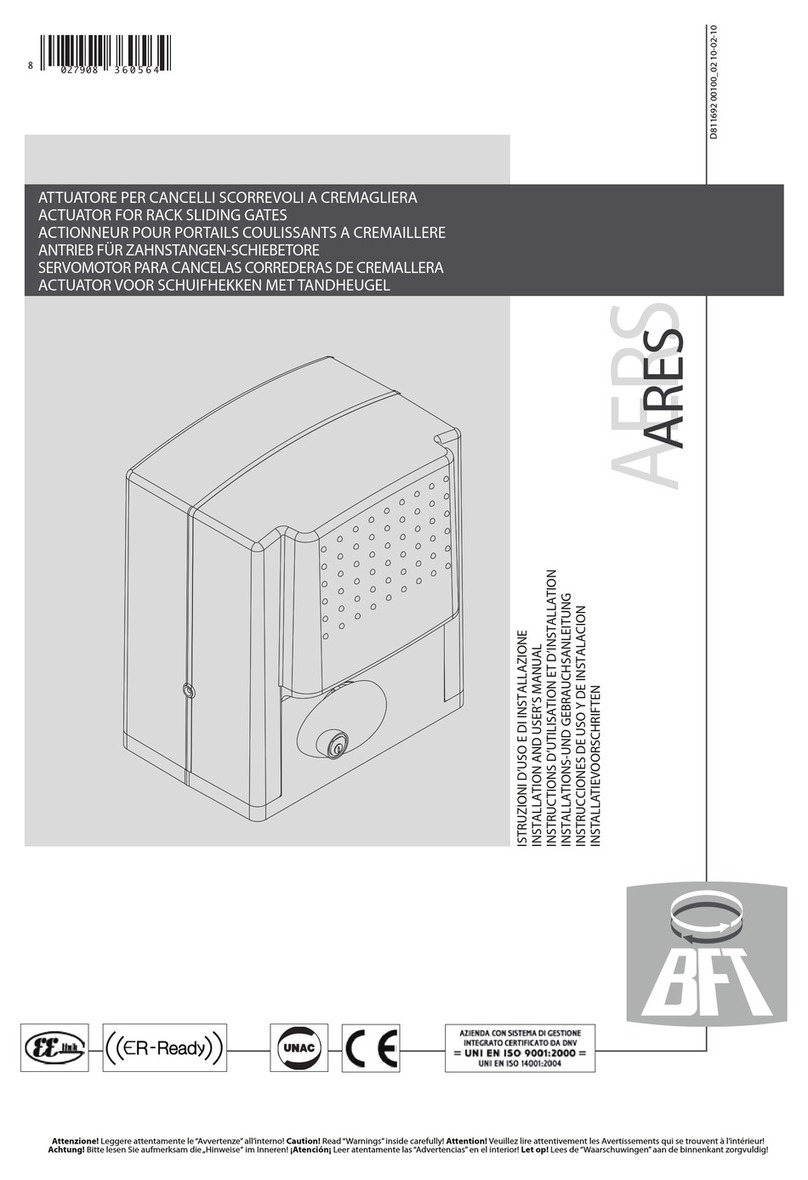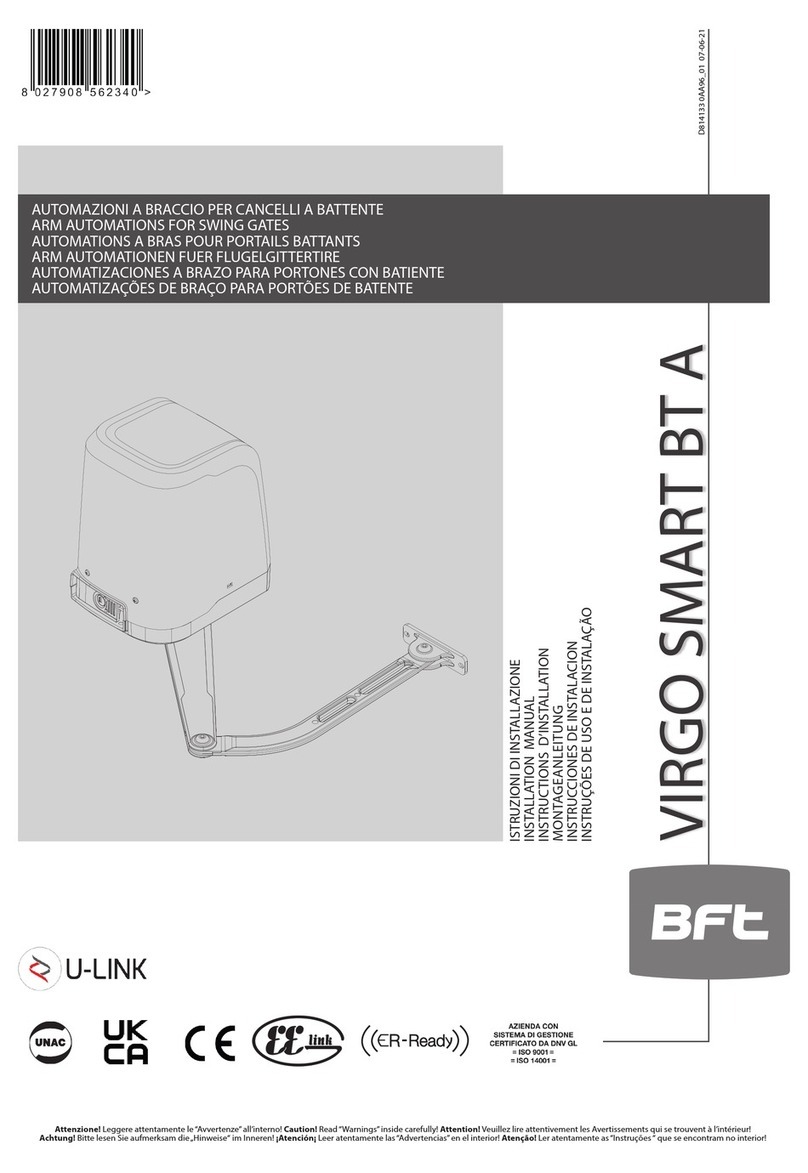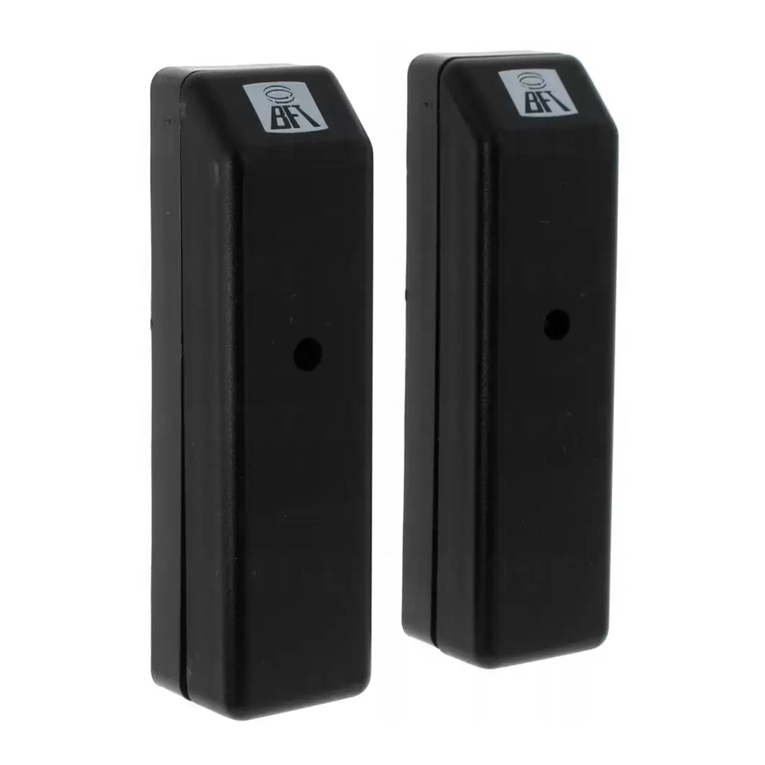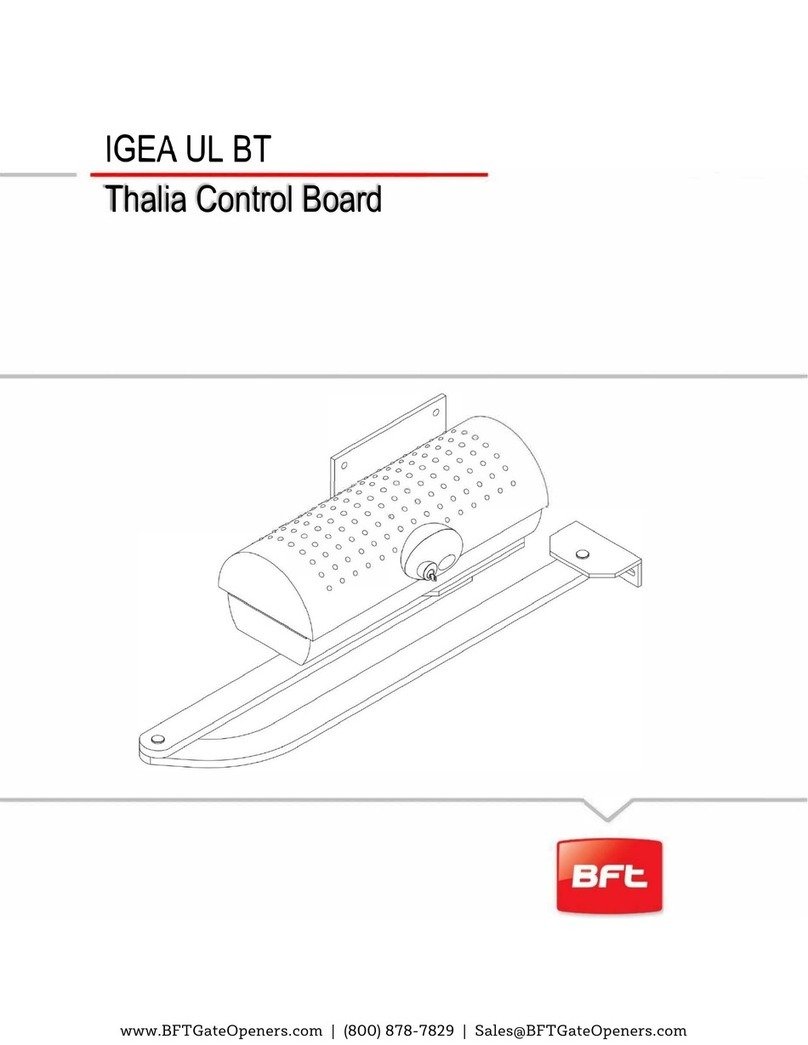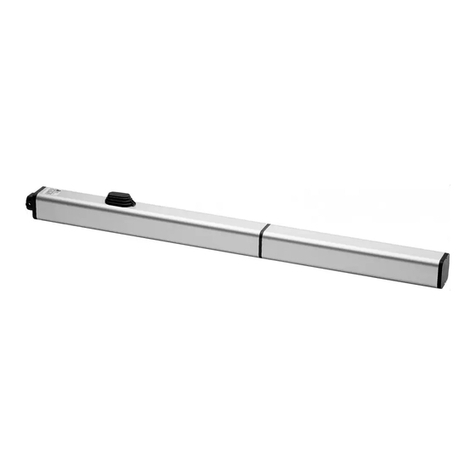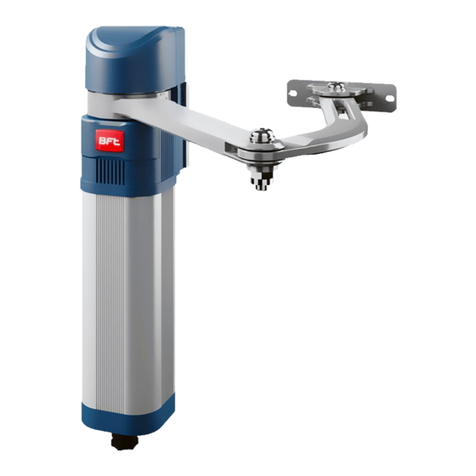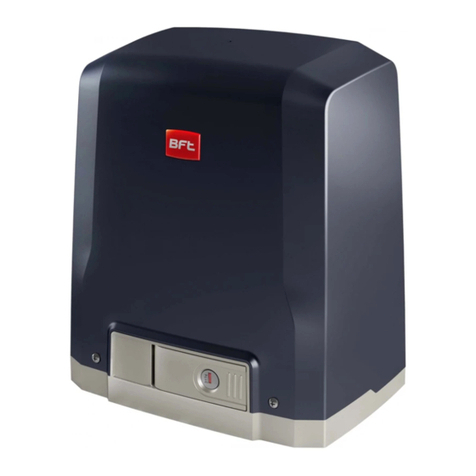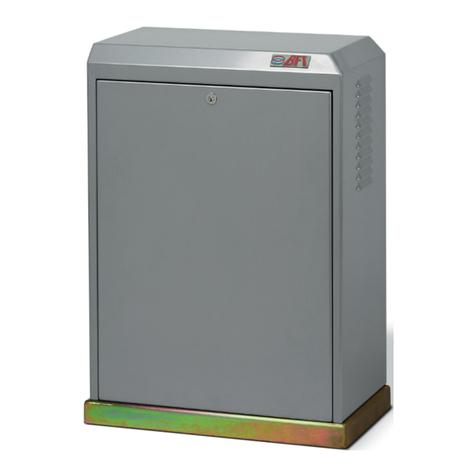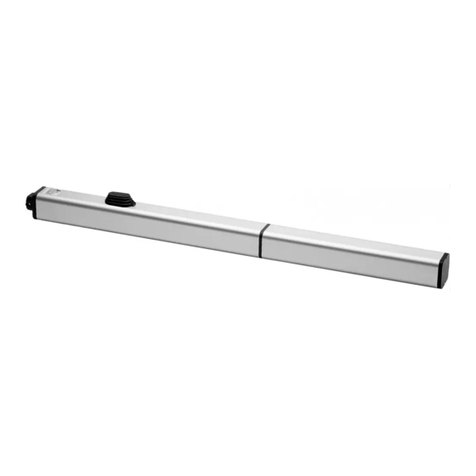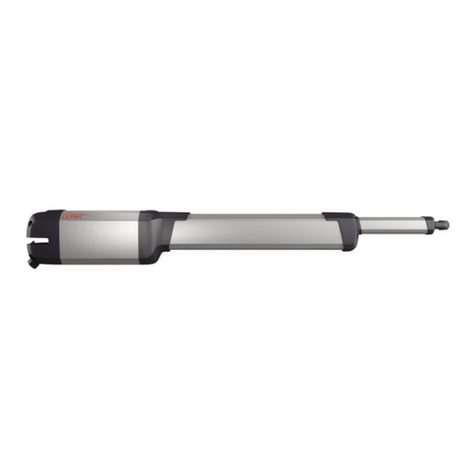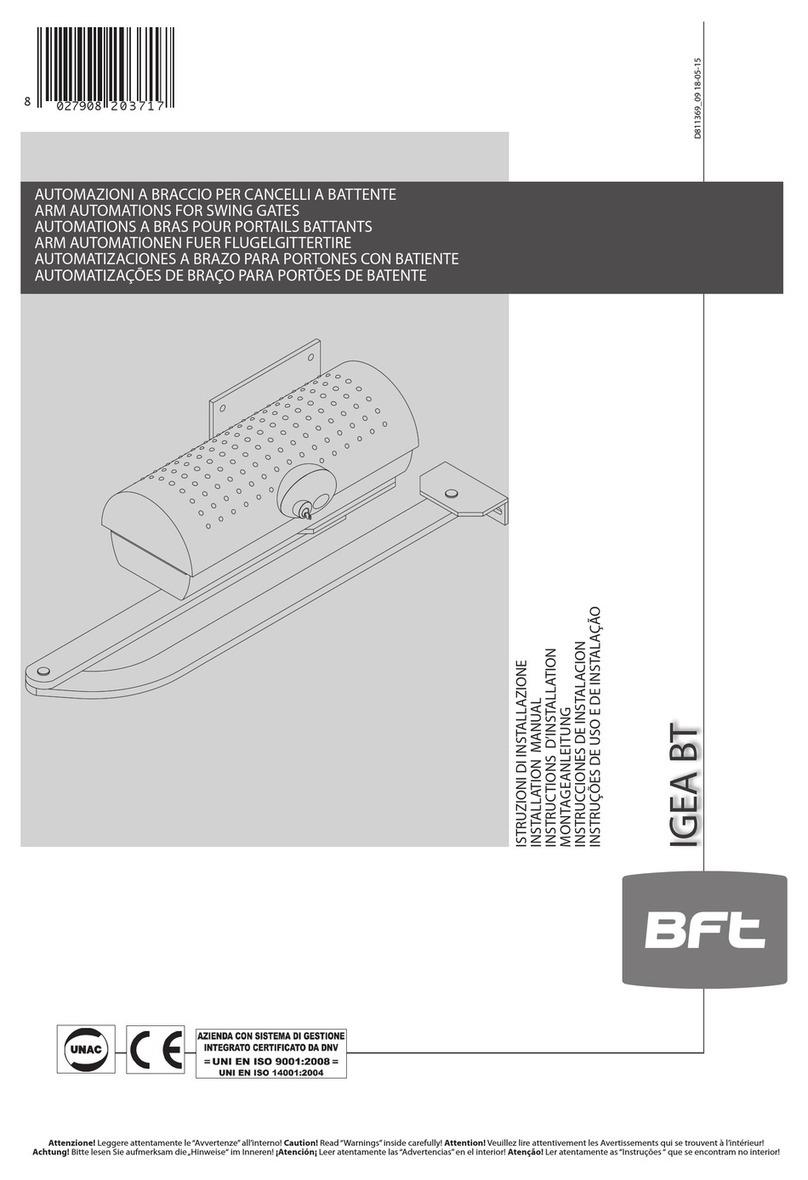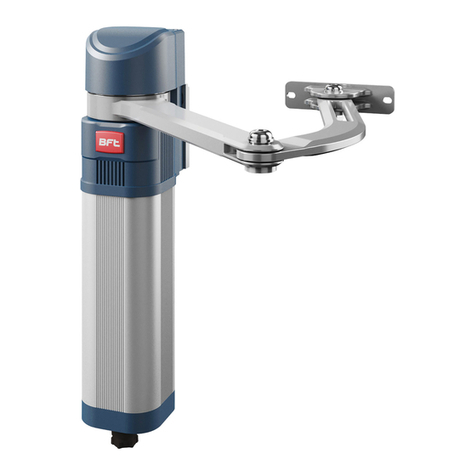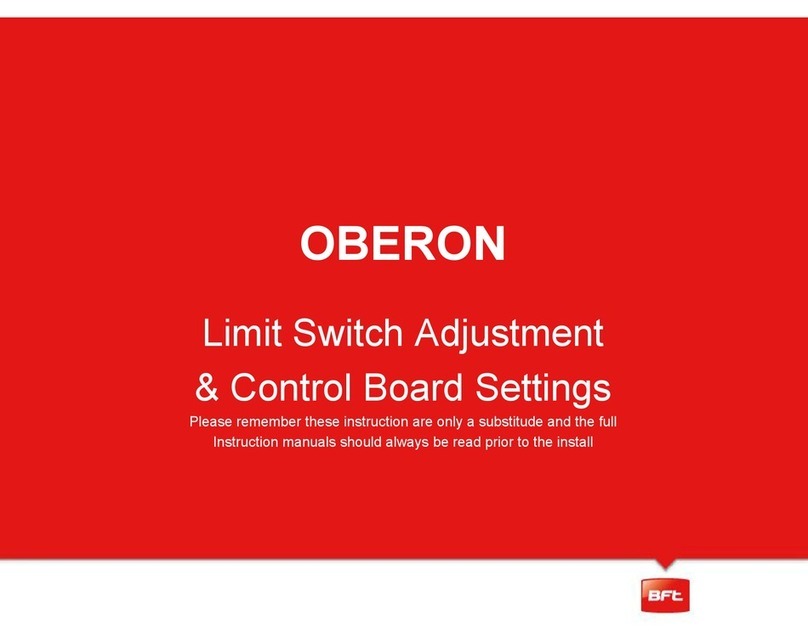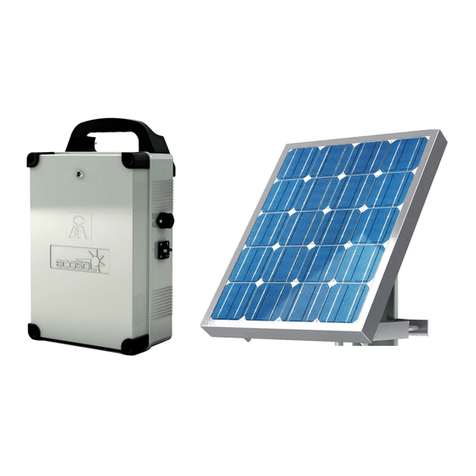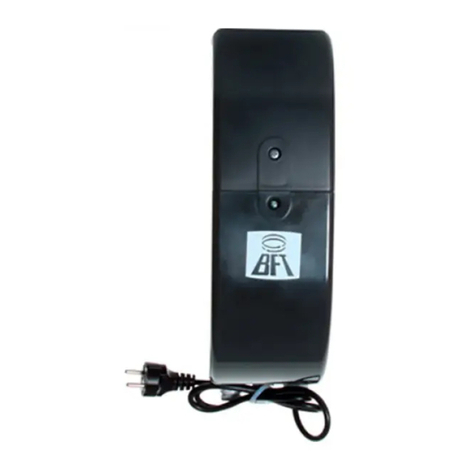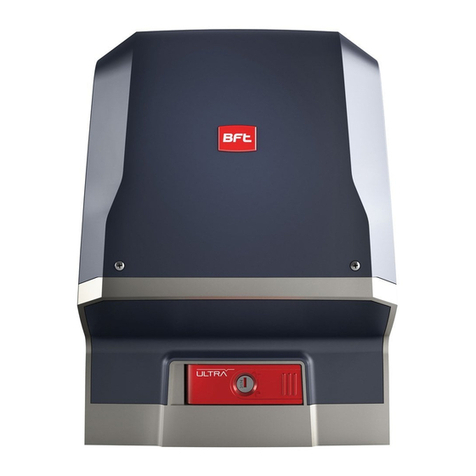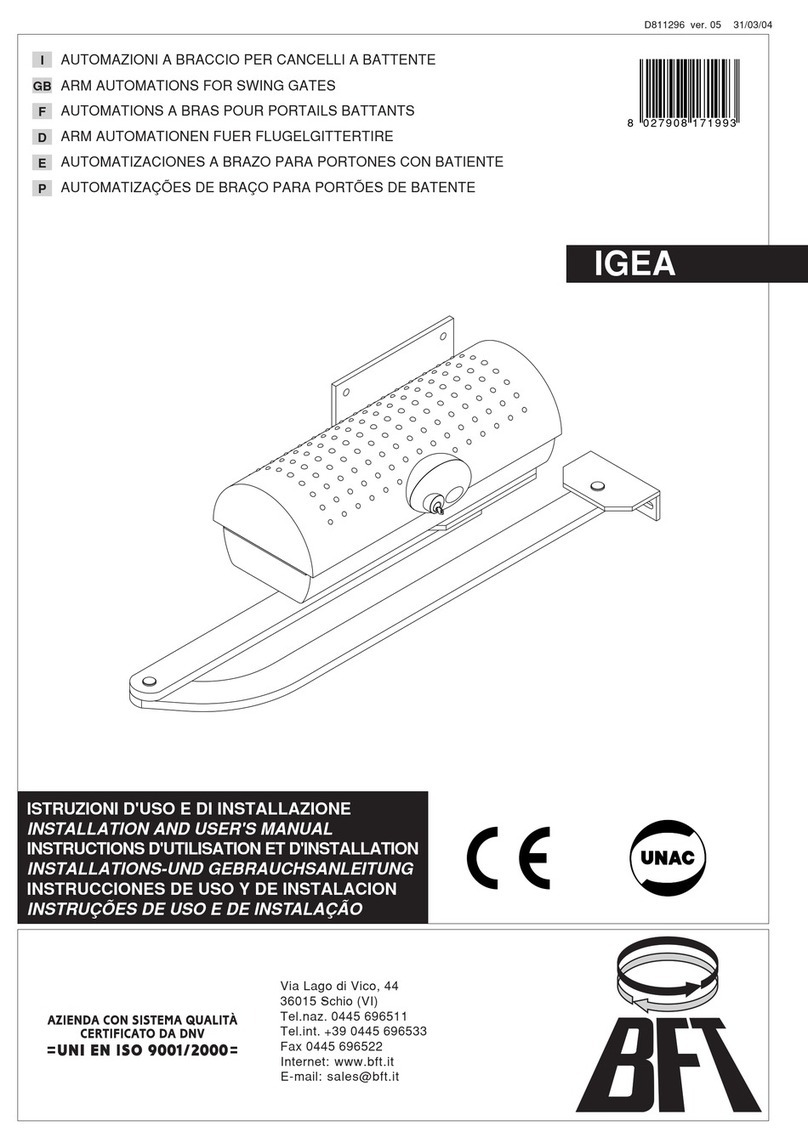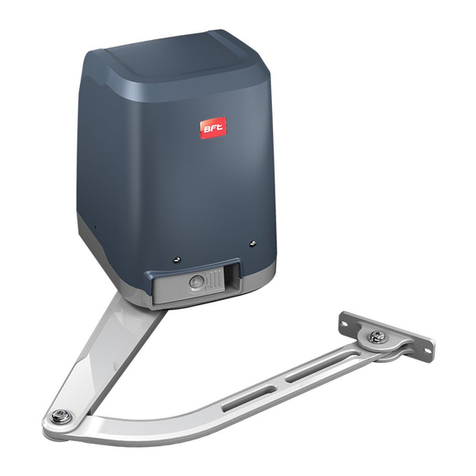
GENERAL SAFETY
W A R N IN G ! A n incorrect installation or im proper use of the product can cause dam age to persons, anim als or property.
•A u to m a tio n s h o u ld b e in s ta lle d o n a g a te w h ic h is m o v in g fre e ly. A n y is s u e w ith th e s m o o th o p e n in g o f c lo s in g o f a g a te w ill n o t b e c o rre c te d
by adding autom ation.
•Scrap packing m aterials (plastic, cardboard, polystyrene etc) according to the provisions set out by current standards. Keep nylon or polystyrene
b a g s o u t o f c h ild re n s re a c h .’
•Keep this instruction m anual for future reference.
•T h is p ro d u c t w a s e x c lu s iv e ly d e s ig n e d a n d m a n u fa c tu re d fo r th e u s e s p e c ifie d in th e p re s e n t d o c u m e n ta tio n . A n y o th e r u s e n o t s p e c ifie d in th is
docum entation could dam age the product and be dangerous.
•The C om pany declines all responsibility for any consequences resulting from im proper use of the product, or use w hich is different from that
expected and specified in the present docum entation.
•D o not install the product in explosive atm osphere.
•The C om pany declines all responsibility for any consequences resulting from failure to observe G ood Technical Practice w hen constructing
closing structures (door, gates etc.), as w ell as from any deform ation w hich m ight occur during use.
•Follow and com ply w ith national and/or local electrical codes w hen perform ing any electrical installation.
•D isconnect the electrical pow er supply before carrying out any w ork on the installation. A lso disconnect any buffer batteries, if fitted.
•Fit all the safety devices (photocells, electric edges etc.) w hich are needed to protect the area from any danger caused by squashing, conveying
and shearing, according to and in com pliance w ith the applicable directives and technical standards.
•It is re c o m m e n d e d to p o s itio n a t le a s t o n e lu m in o u s s ig n a l in d ic a tio n d e v ic e (b lin k e r) w h e re it c a n b e e a s ily s e e n fo r a d d itio n a l s a fe ty
•The C om pany declines all responsibility w ith respect to the autom ation safety and correct operation w hen other m anufacturers com ponents are’
used.
•O nly use original parts for any m aintenance or repair operation.
•D o not m odify the autom ation com ponents, unless explicitly authorized In w riting by the Com pany.
•Instruct the product user about the control system s provided and the m anual opening operation in case of em ergency.
•A nything w hich is not expressly provided for in the present instructions, is not allow ed.
•Installation m ust be carried out using the safety devices and controls prescribed by the U L 32 5 Standard.
C
HECKING INSTALLATION
B efore the autom ated device is finally put into operation, perform the follow ing checks m eticulously:
•M ake sure all com ponents are fastened securely.
•Check that all safety devices (photocells, pneum atic safety edge, etc.) are w orking properly.
•Check the em ergency operation control device.
•Check opening and closing operations w ith the control devices applied.
•Check the electronic logic for norm al (or personalized) operation in the control panel.
A
DJUSTING OPERATING FORCE
WARNING: O perating force is adjusted w ith extrem e precision by m eans of the control units electronic control. O peration at the end of travel is ’
adjusted electronically in the control panel. To provide good anti-crush safety, the operating force m ust be slightly greater than that required to
m ove the leaf both to close and to open it.
CONTROL
There are various options w hen it com es to the control system (m anual, rem ote control, access control w ith m agnetic badge, etc.) depending on
the installation s needs and characteristics. See the relevant instructions for the various control system options. People due to use the ’
autom ated device m ust be instructed how to control and use it.
OPERATIONAL SAFETY
The installer is responsible for communicating the following information to the end-user:
This product has been designed and built solely for the purpose indicated herein. U ses not contem plated herein m ight result in the product
being dam aged and could be a source of danger.
The Firm disclaim s all responsibility resulting from im proper use or any use other than that for w hich the product has been designed, as
indicated herein, as w ell as for failure to apply G ood P ractice in the construction of entry system s (doors, gates, etc.) and for deform ation that
could occur during use. If installed and used correctly, the autom ated system w ill m eet the required level of safety. N onetheless, i
t is advisable
to observe certain rules of behavior so that accidental problems can be avoided:
●Keep adults, children and property out of range of the autom ated system , especially w hile it is operating.
●O p e ra te th e s y s te m w h e n th e fu ll p a th o f th e g a te is w ith in s ig h t.
●It is essential to frequently check that all safety devices are in good w orking condition.
●T h is a p p lic a tio n is n o t m e a n t fo r u s e b y p e o p le (in c lu d in g c h ild re n ) w ith im p a ire d m e n ta l, p h y s ic a l o r s e n s o ry c a p a c itie s , o r p e o p le w h o
do not have suitable know ledge, unless they are supervised or have been instructed by people w ho are responsible for their safety.
●Children m ust be supervised to ensure they do not play w ith the system . Keep rem ote controls or other control devices out of reach of
children in order to avoid the autom ated system being operated inadvertently.
●C h e c k th e s y s te m fre q u e n tly, e s p e c ia lly h in g e s , c a b le s , s p rin g s o r s u p p o rts , to d e te c t a n y lo s s o f b a la n c e a n d s ig n s o f w e a r o r d a m a g e .
●W hen cleaning the outside or perform ing other m aintenance w ork, alw ays cut off m ains pow er.
●Keep the photocells optics and illum inating indicator devices clean. Check that no branches or shrubs interfere w ith the safety devices’
(photocells).
●D o not use the autom ated system if it is in need of repair. In the event of a m alfunction, cut off the pow er, activate the em ergency
release to allow access and call in qualified technical personnel (professional installer).
●If the autom ated system requires w ork of any kind, em ploy the services of qualified personnel (professional installer).
●A n y th in g th a t is n o t e x p lic itly p ro v id e d fo r in th e s e in s tru c tio n s is n o t a llo w e d .
●The operators proper operation can only be guaranteed if the inform ation given herein is com plied w ith. The Firm shall not be’
answ erable for dam age caused by failure to com ply w ith the installation rules and instructions featured herein.
●H ave the com plete system checked including all safety devices by a qualified professional technician at least once a year.
D escriptions and illustrations herein are not binding. W hile w e w ill not alter the products essential features, the Firm reserves the right, at ’
any tim e, to m ake those changes deem ed necessary to im prove the product from a technical, design or com m ercial point of view , and w ill not be
required to update this publication accordingly.
O P ER ATIO N AL SA FETY 3






